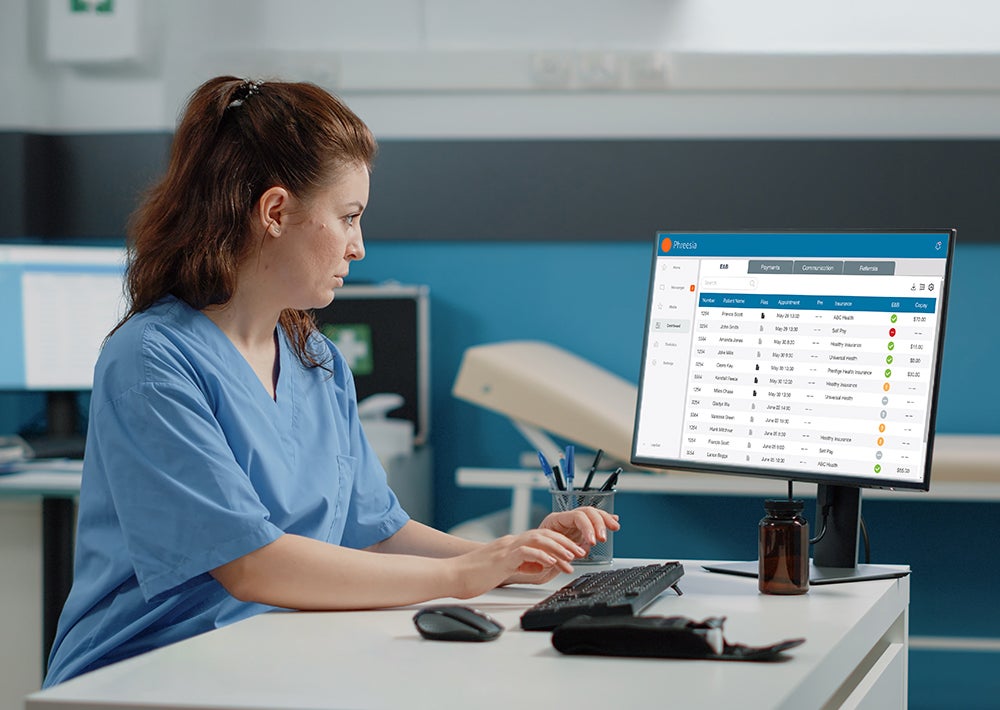Critical access hospitals (CAHs) provide essential care access to patients in rural areas, nearly all of which are medically underserved. Despite often being the sole source of healthcare services in their communities, the long-term viability of CAHs has worried policymakers for years. Since 2010, 138 rural hospitals have closed—nearly half (46%) of which were CAHs. While the Provider Relief Fund and other COVID-19 financial-assistance programs decreased closures in 2021, those funds are no longer available. Now, faced with the ongoing effects of the pandemic, rising prices and investment losses, the financial outlook for these crucial facilities has worsened, and nearly 30% of all rural hospitals are at risk of closing in the near future.
While CAHs can’t control their reimbursement rates, one strategy they can leverage is using technology to strengthen their bottom line. Here are a few ways that digital tools can improve patient access and boost revenue—vital tasks considering the limited resources, small patient populations and narrow-to-negative operating margins of CAHs.
Increase patient access and reduce no-shows
CAHs’ long-term success depends on optimized schedule utilization, but filling every appointment slot is challenging because rural facilities typically see higher-than-average no-show rates. To overcome these challenges, scheduling and appointment arrivals must be a seamless experience.
Luckily, there are easy-to-use digital tools that can improve schedule efficiency and help ensure that patients show up. Online self-scheduling and appointment requests allow patients to secure appointments outside of business hours and choose visit times that work best for them, increasing the likelihood that they will keep their appointment.
Appointment reminders also can reduce no-shows by offering patients a consistent touchpoint for confirming, canceling or rescheduling their visit, additionally creating enough lead time for staff to fill reopened slots. Phreesia data shows that appointment-reminder messages confirmed by patients resulted in 78% fewer no-shows. Plus, tools like smart waitlists can quickly fill any cancelled appointment slots automatically with no staff work required.
Patients also are more likely to follow through on their appointments when they receive pre-visit instructions. With an automated communication tool, CAHs can easily share arrival details and wayfinding instructions via email or text message before the visit—with minimal staff work required—eliminating potential patient confusion and ensuring a seamless arrival experience.
If more patients show up for their appointments, the benefits are two-fold: Patients get the care they need, which supports better health outcomes, and CAHs gain more opportunities to see reimbursable patients and boost their revenue. This is particularly important for rural hospitals since, unlike traditional hospitals, Medicare pays CAHs based on their reported costs rather than the number or types of services they provide.
Offer a patient-centric payments experience
Patient demographics heavily influence rural hospitals’ financial health. Rural hospitals’ patients tend to be uninsured and at high risk for serious health conditions, including people over age 65 and people who experienced childhood poverty. These risk factors result in higher costs.
To offset those higher costs, CAHs can implement one or more of the following patient-centered digital tools to help collect more of patients’ financial responsibility in sensitive and flexible ways.
- Time-of-service and self-pay collections—With digital-intake tools, CAHs can prompt patients to pay their copay or outstanding balance during check-in and help them understand exactly what they owe after insurance verification. Given that 80% of rural hospitals’ revenue comes from outpatient procedures, the convenience of self-pay collections—whether at the time of service or after the visit—can eliminate financial guesswork for rural patients, while also boosting collections so CAHs get paid faster.
- Payment plans—Payment plans offer the flexibility and choice that many rural patients need: A 2020 report found that 1 in 3 adults living in rural areas reported having trouble affording their medical bills. For patients struggling to pay a big hospital bill or other major healthcare expenses, payment plans can help them manage their responsibility without having to disclose their financial situation to healthcare staff, while also allowing CAHs to cut down on accounts receivable.
- Card on file—A card-on-file program can reduce friction in the payment process for CAH patients. With a patient’s credit card stored on a secure platform, CAH staff can notify them of an upcoming payment, whether it’s part of an agreed-upon amount immediately following treatment, or part of an established monthly payment plan.
A digital platform also can help CAHs send a consolidated medical bill to patients who received care services across different departments in the facility. By consolidating a patient’s full financial responsibility into a single invoice, CAHs can cut down on patient’s confusion about their bill, streamline the payment process, minimize collection fees, reduce reliance on paper statements and decrease unnecessary costs.
As critical access hospitals struggle to stay afloat, technology offers a much-needed lifeline for improving patient access and boosting revenue—and thereby reinvigorating their bottom line. Learn how your organization can use Phreesia to improve your revenue cycle efficiency and performance.





